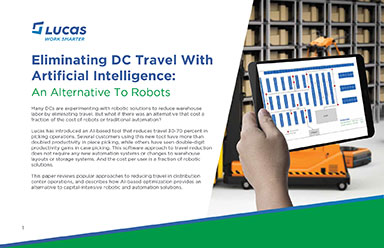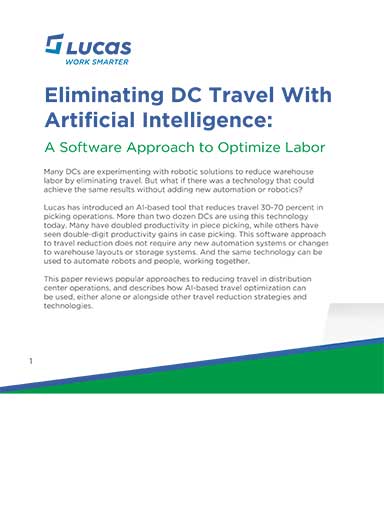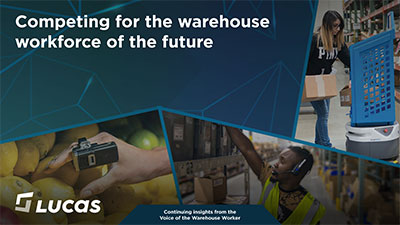Optimize Ecommerce Fulfillment Without Replacing Current DC Infrastructure

As retail DCs and manufacturers volumes increase, many facilities are struggling to scale up their ecommerce fulfillment capabilities to meet the demand.
How To Improve Ecommerce Fulfillment Without Replacing Current DC Infrastructure
Many retail and wholesale DCs have seen their direct-to-consumer volumes double, triple and quadruple over the last 1-2 years. This has intensified the pressure on traditional business-to-business (B2B) DCs to transform their ecommerce fulfillment processes to ship consumer orders faster, at lower cost, and with better accuracy than ever before.
Many facilities have struggled to adapt processes and systems to the unpredictable demands of ecommerce fulfillment. Their current processes were typically designed for predictable B2B orders with very different order profiles and shipping requirements than ecommerce orders. Here we outline some of the leading strategies multi-channel DCs can use to improve and optimize their ecommerce fulfillment processes without completely rebuilding or replacing their systems and infrastructure.
The strategies include continuous order streaming, variable pick processes, travel optimization, and put-wall sortation and order assembly. These new strategies can all be implemented using warehouse optimization software that orchestrates the work of people alongside existing automation and warehouse management systems. Warehouse optimization software helps transform DC operations and optimize fulfillment without sacrificing previous technology investments.
The Challenges of Ecommerce Fulfillment in Traditional Business-to-Business DC Operations
Ecommerce fulfillment is much different than traditional business-to-business distribution:
- Increased volume of orders
- Smaller order sizes
- More single-line, single unit orders
- Smaller units of measure (more eaches and inner packs than cases)
- Less predictable
- Faster turn-around times and later order cut-offs
The biggest challenge is that current DC systems are not designed or optimized for shipping high volumes of ecom orders. In particular, most current warehouse management systems and warehouse execution systems rely on wave-based order release processes that are built for predictable, scheduled order volumes and deliveries. These systems cannot readily adjust to expedite orders for same-day shipping.
In addition, most traditional DCs will still need to ship large B2B orders while boosting B2C shipments. So how can DCs do these very different jobs equally well without completely rebuilding their systems?
Strategies to Scale Direct-To-Consumer Operations
Order Streaming
Order streaming, or waveless picking, is an alternative to wave-based picking that makes incoming orders available for picking as soon as they are received. If a consumer orders a product online at 4 pm, a wave-based system would need to wait until all current waves are completed before this order can be released – a potential delay of one or more hours. With order streaming, this new order can be released immediately, so it can be picked within minutes and shipped by 5pm for delivery in 1-2 days.
Order streaming requires dynamic rules for prioritizing orders, sequencing work, and creating optimized picking assignments across zones in a facility. DCs supporting multiple channels need to ensure that wholesale orders are picked, packed and shipped complete and on time using different rules than would apply to ecom orders.
Within the Lucas system, this challenge is addressed by applying prioritization rules to suit ecommerce and traditional wholesale orders. As orders are received, Lucas assigns a priority code based on ship time, delivery date, customer or order type, and other variables that can be tailored for each DC.
As workers request their next picking assignment, the Lucas system will give the worker the highest priority order available in his or her picking zone, or create an optimized batch of work based on order priorities and batching schedules. (Learn more about this in our recent blog post- “Waveless Picking Is A Key Capability For Ecommerce Fulfillment”
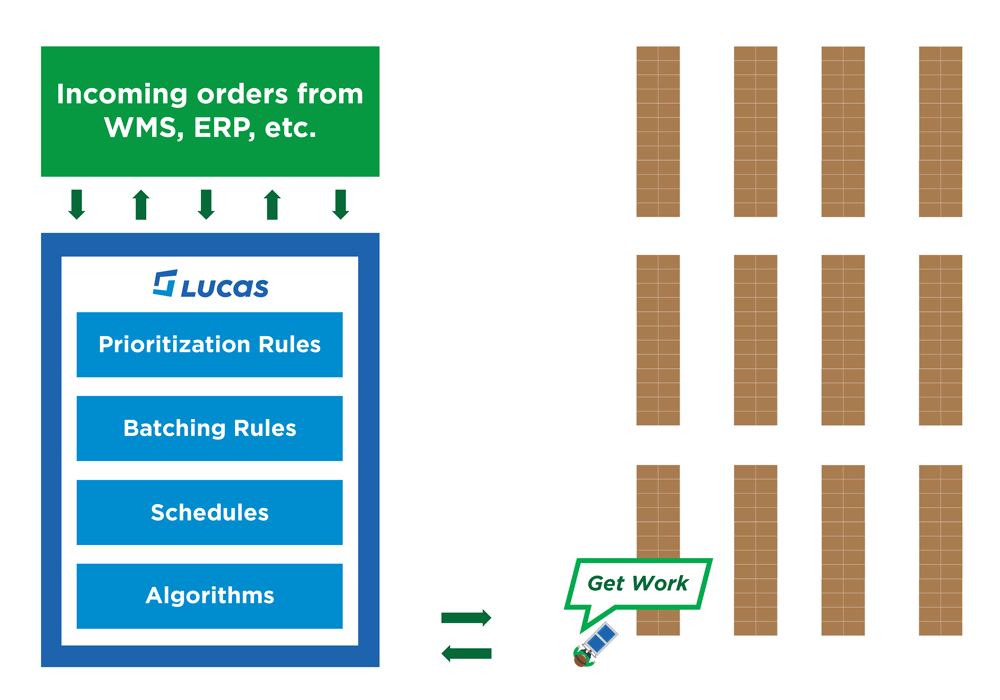
Variable Pick Processes
One approach to handling B2B and ecom orders from a single facility is to create separate picking zones for different order types. This allows the DC to create optimized picking processes in each of those discrete zones. While this may optimize picking efficiency across order types, it comes at a cost of duplicating inventory and creating duplicate replenishment processes. A better approach is to pick ecom and B2B orders from a single pick zone using variable pick processes. Here are a two each pick examples:
Pick to tote in a high-velocity pick module – Traditional multi-line B2B orders can be picked into discrete order totes – a single order per tote. At the same time, multiple single-line ecommerce orders can be picked into a single tote. In a pick-to-train process (in which a single picker may be picking into multiple totes at once), a picker may be simultaneously picking ecom and B2B orders in the same train.
Pick to cart from shelving – A similar approach can be followed in pick-to-cart zones in which single-line ecom orders can be picked into a single tote on a cart among multi-line B2B orders picked into discrete totes. In addition, work execution software allows facilities to create multiple cart configurations within a zone to further optimize pick density per cart.
For example, one Lucas customer employs a 3-position cart for large orders; a 6-position cart for smaller orders; and a 15-position cart for smaller B2B and ecommerce orders. This requires alternative batching rules and strategies (we discuss batch optimization below)
Most current warehouse execution systems and WMS do not support variable pick processes or simultaneous picking of different order types within a zone. In addition, most do not include advanced order batching logic to optimize cart or other batch picking processes.
Travel Optimization – AI-Based Batching and Pick Path Optimization
AI-based batch and pick path optimization is a new concept that reduces travel in a variety of picking and other material handling processes. It is especially useful in each picking – both for ecommerce fulfillment and wholesale distribution. A number of DCs have more than doubled productivity using Lucas intelligent batching and pick path optimization.
The latest, best in breed WMS systems use simple rule-based batching logic to create batch picking assignments. Older systems are even less optimized as they typically create batches based on first-in, first-out sequences. As a result, warehouse workers in some DCs walk more than 12 miles per shift.
An average person walks a mile in 18 minutes, suggesting that a picker may spend over 3.5 hours walking per shift. Through batching and optimizing pick paths, travel can be cut in half or more, adding extra hours per day of productive picking time.
Lucas introduced AI-based batching algorithms that consider order priority, pick locations, product attributes, and cart capacity to create travel-optimized batches. Lucas intelligent batching evaluates millions of potential combinations to determine the “best batch” or grouping of work among the available orders. The below animations describe the difference in travel between batching orders in a FIFO sequence and intelligently batching with Lucas.
Traditional FIFO Batching
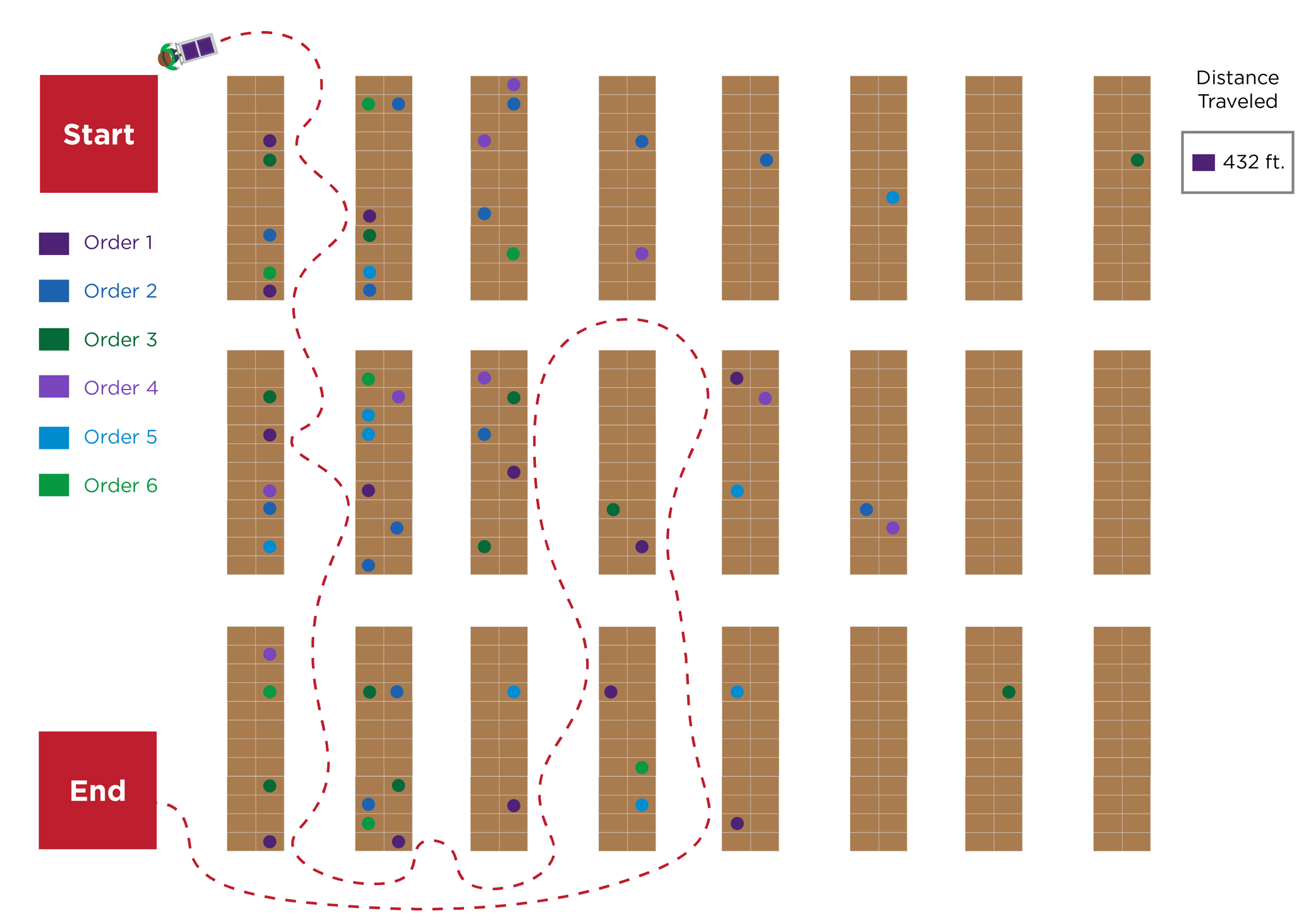
Intelligent Batching With Lucas
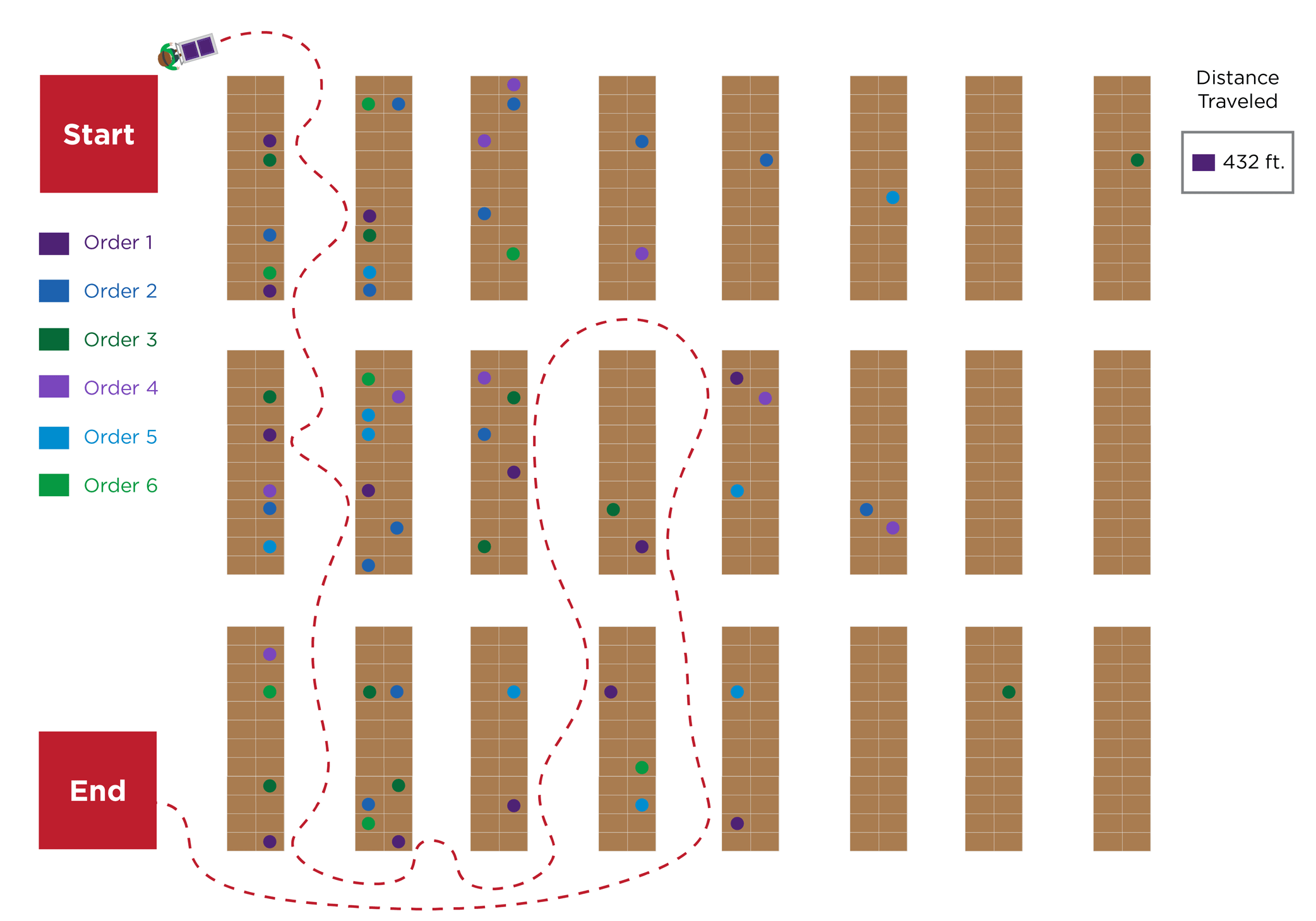
Pick Path Optimization
In addition, typical WMS or other host systems will follow a strict location sequence (A-Z, 1-n) which drives people in a serpentine pick path that causes unnecessary travel and fatigue. Lucas DWO takes into account travel distance, zone sequencing, starting and end points, cost of moves and directional aisle restrictions to optimize pick paths. The animation below describes the difference between traditional paths compared to DWO path optimization.
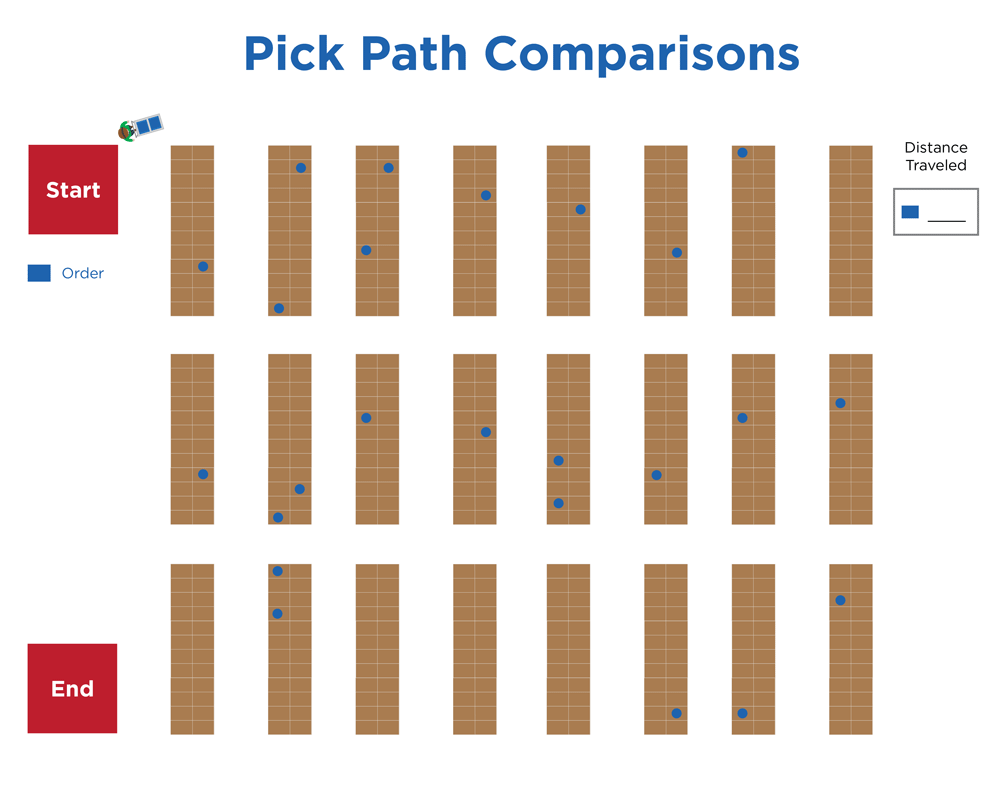
Order Consolidation and Pack/Ship
Just as picking processes in B2B DCs are optimized for larger orders, order consolidation processes also have been designed for B2B orders. In some cases, DCs that have boosted ecommerce order picking efficiency and throughput, have seen their order consolidation and pack/ship processes create an unexpected bottleneck.
There are numerous proven methods for sorting, merging and assembling orders in the DC that can be applied to this problem. Put-to-order processes are especially useful for high-volume items – such as sales items – where the other item or items in the order may be picked in a more traditional process and the sale items are added at order packing. Likewise, put walls have emerged as a popular, effective and low-cost option for streamlining and improving post-pick steps, especially for smaller ecommerce orders in which items may be picked in multiple zones.
A put wall is a cabinet-like structure, either mobile or stationary, divided into different slots or spaces. Workers place products in the assigned order slot on the front of the put wall. When all of the items for an order are in the designated space, a worker on the back side of the wall removes the items and prepares them for packing and shipping.
A New Era Of Fulfillment
There is a tremendous opportunity for manufacturers and B2B distributors to earn their share of the fast-growing ecommerce market. Manufacturers like PepsiCo and Unilever are already taking steps to sell and deliver more goods directly to consumers. But shifting operations to ecommerce fulfillment doesn’t come without costs and potential disruptions. Shipping truckloads, pallets, and cases to wholesalers or retailers is a far different proposition than sending individual products to consumers.
Warehouse operators need to adapt their facilities and systems in order to manage and scale their ecommerce fulfillment operations. Rather than purchasing and installing new warehouse management software, companies are turning to warehouse optimization solutions that can stream orders, optimize batching and travel, consolidate orders, and support variable picking processes. The software adds new capabilities and flexibility while maintaining current systems and infrastructure. It also helps adapt for the future by integrating easily with new robotics, automation and IT systems.
Related White Paper
Eliminating Travel Within a Distribution Center Using Artificial Intelligence
Many top-performing DCs have maxed out their productivity gains and travel savings through process design and optimization, and given today’s changing market factors, most facilities are looking for other ways to eliminate travel that don’t require fixed, inflexible automation systems. Download Now!
Article Topics
Lucas Systems News & Resources
Warehouse Gamification Boosting Employee Engagement, Productivity Study: gamification entices 84% of warehouse workers Lucas Systems, Carnegie Mellon University partner on packaging challenges Automatic data capture (ADC): Accelerating the process Upping the health of distribution center (DC) picking Warehouse execution systems (WES) stretches to encompass labor Labor Management: Technology + Methods = Progress More Lucas SystemsLatest in Technology
South Korea Finally Overtakes China in Goods Exported to U.S. SAP Unveils New AI-Driven Supply Chain Innovations U.S. Manufacturing is Growing but Employment Not Keeping Pace The Two Most Important Factors in Last-Mile Delivery Spotlight Startup: Cart.com is Reimagining Logistics Walmart and Swisslog Expand Partnership with New Texas Facility Taking Stock of Today’s Robotics Market and What the Future Holds More Technology

